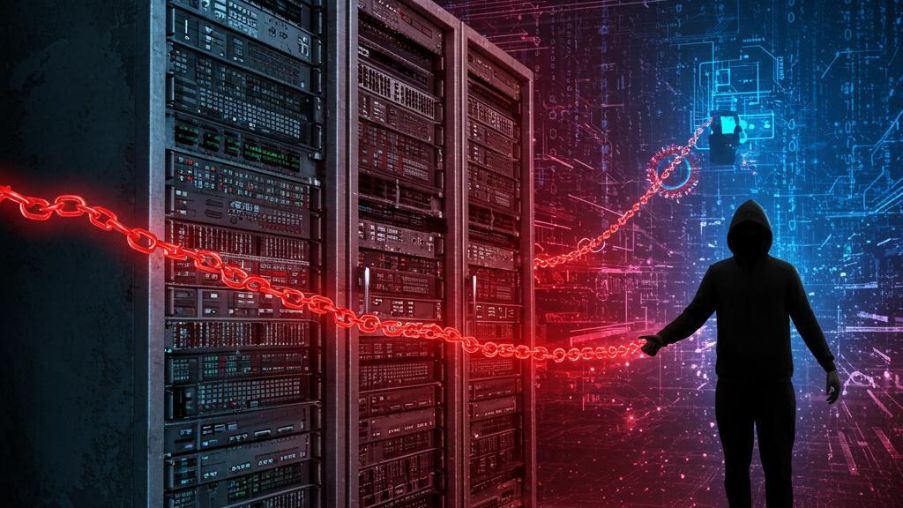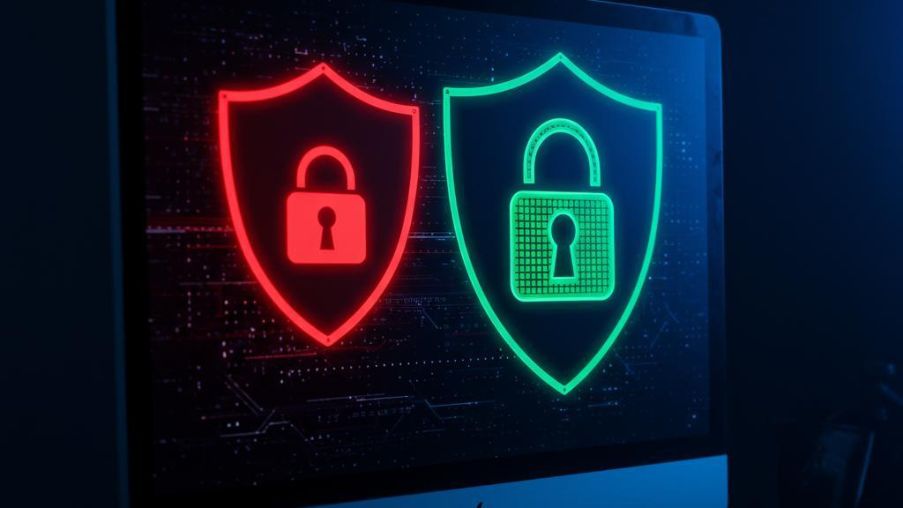Key Benefits of Access Control Systems for Businesses

Advantages of Installing Access Control Systems for Enhanced Security Include Restricting unauthorized access, improving employee safety, and enabling remote monitoring. These systems streamline entry management, reduce security risks, and support regulatory compliance. Scalable solutions also help businesses adapt as security needs grow.
Key Advantages of Installing Access Control Systems for Enhanced Security
Are you concerned about unauthorized access impacting your operations? This post explains how access control systems boost security, control costs, and offer flexible solutions. Readers learn how these systems secure facilities and support growing business needs. The guidance provided helps organizations address persistent security challenges and encourages them to book a free assessment.
Key Takeaways
- access control systems integrate hardware and software for secure building management
- these systems verify identities using sensor data and centralized databases
- real-time monitoring and emergency alerts help reduce risks and support compliance
- integration with fire safety systems enables quick responses during emergencies
- scalable access control solutions lower security costs while enhancing asset management
Understanding Access Control Systems and Their Purpose

Access control systems manage door access using mandatory access control and entry system methods, ensuring improved safety. Their scalability supports business growth while easing the security guard's role. This overview outlines key definitions and illustrates how these systems boost overall protection.
Defining Access Control Systems
An access control system, often referred to as an access system, combines hardware and software to monitor and manage entry points. The design relies on sensor technology and defined policy measures to enforce security access control standards.
These systems verify identities and support safety measures by linking with a fire alarm system for immediate response during emergencies. The use of precise sensor data with established policy protocols assists organizations in maintaining reliable security access control across facilities.
How Access Control Systems Enhance Security
Access control systems strengthen security measures by limiting entry at essential points such as designated gates, ensuring streamlined building access control. They use sensor technology and a centralized database to record entry logs, which allows for prompt verification of credentials and timely identification of risks.
A respected blog on security trends highlights that these systems deliver practical benefits by continuously monitoring access points and updating information in a secure database. Organizations that implement access control systems can improve gate operations and overall safety while meeting compliance requirements efficiently.
Key Advantages of Installing Access Control Systems

This section outlines key benefits in access control security. Interweave Tech explains how systems improve employee safety and streamline access management processes. The overview reviews how secure card reader systems and discretionary access control minimize risks of unauthorized entry, support remote monitoring methods, and aid compliance with the general data protection regulation, offering practical insights for modern business needs.
Improving Employee Safety and Security
Access control systems play a crucial role in improving employee safety by integrating advanced automation with cloud computing capabilities. This approach allows an organization to monitor entry points using a robust intercom system and ensures a prompt emergency response:
Access control systems enable organizations to achieve streamlined security management by integrating state-of-the-art automation and cloud computing for real-time updates and alerts. Their design supports reliable intercom communication and immediate emergency measures, ensuring that employees work in a secure environment while addressing common safety concerns.
Streamlining Access Management Processes
Streamlining access management processes is a strategic method that offers secure, efficient control over building entry and exit. Advanced access control systems replace traditional lock and key methods, recording vital data to minimize risks such as burglary and ensuring readiness with backup measures like fire extinguisher protocols:
- Automated tracking of entry logs
- Consistent monitoring of access points
- Improved verification of user credentials
- Enhanced integration with safety systems
Implementing these processes results in efficient control over premises and faster response during emergencies. Organizations benefit from streamlined access management that supports clear policy enforcement and reduces system vulnerabilities.
Reducing Risks of Unauthorized Entry
Access control systems that incorporate card access control offer precise methods for verifying identity while curtailing the risk of unauthorized entry. By integrating robust security systems with a clear dashboard, these solutions simplify audit procedures and fortify overall facility protection
m actionable insights presented on a detailed dashboard that supports immediate intervention when discrepancies occur. Routine audit reviews not only highlight system vulnerabilities but also ensure that card access control measures remain effective in sustaining a secure environment.
Facilitating Remote Monitoring and Management
Remote monitoring and management in access control systems provide organizations with the ability to supervise door access control from any location using advanced software. This approach enables security teams to detect risks of data breach, vandalism, and threats to personal data:
The system combines modern technology with reliable tools to ensure effective remote oversight. This integration of sensor data and centralized software management allows organizations to maintain strict door access control while reducing vulnerabilities linked to unauthorized access and related threats.
Enhancing Compliance With Security Regulations
Access control systems assist organizations in meeting regulatory demands by establishing precise authorization steps that generate a reliable audit trail for every entry event in hunstville-alabama.
Industry experts note that these solutions provide clear and enforceable guidelines, ensuring that only approved users gain access while every action is recorded accurately. This structured approach supports regulatory compliance and safeguards sensitive data, offering organizations a practical way to optimize their security processes and operational efficiency.
Cost-Effectiveness of Access Control Systems

Access control systems deliver long-term savings on security measures by reducing surveillance expenses and cutting it infrastructure costs. Efficient construction and upkeep of infrastructure minimize losses from theft and mismanagement. The section examines these financial benefits, offering practical insights for enterprises and government agencies focused on secure, cost-effective operations.
Long-Term Savings on Security Measures
Investing in an access control system results in long-term savings by cutting costs on physical security upgrades and lowering ongoing maintenance fees. The integration of computer analysis and biometrics verification enforces accountability and ensures each asset is carefully monitored.
The system automates record keeping and minimizes manual oversight, which reduces the risk of errors and unauthorized access. By using computer-driven processes and biometrics technology, organizations protect every asset while maintaining clear accountability for all access events.
Minimizing Losses From Theft or Mismanagement
Interweave Tech employs electronic access control systems to monitor every building entry and exit, reducing the risk of losses caused by theft or mismanagement. The system sends real-time data to a smartphone and provides detailed information about access events that aid in managing the budget effectively:
- Real-time tracking of access events
- Smartphone notifications for prompt alerts
- Detailed reporting about activity patterns
- Data insights that support budget planning
- Secure management of building entry points
The solution records each access occurrence to pinpoint irregularities quickly and cut down on manual errors. Administrators review comprehensive reports about access patterns using a smartphone interface, thereby optimizing the budget allocated for each building's security needs.
Scalability and Flexibility of Access Control Systems

Scalable access control systems support business growth and integration with other security technologies. Card access systems, elevator units, regulation protocols, internet connectivity, and keypad features combine for reliable protection. The following sections detail how each component adapts to expanding needs and merges with additional security technologies for improved operational efficiency.
Adapting to Business Growth
Scalable access control systems offer a flexible solution for organizations expanding their property portfolio by seamlessly integrating physical access control with robust physical security measures. They align each new venue with strict regulatory compliance standards, ensuring that security protocols remain consistent as the organization grows.
The deployment of these systems supports a strategic upgrade in security infrastructure that can lower risks affecting insurance premiums. Industry experts observe that well-implemented solutions not only protect property assets but also sustain a reliable security environment that meets regulatory compliance requirements.
Integrating With Other Security Technologies
Access control solutions that incorporate advanced authentication measures work seamlessly with integrated fire safety systems to form a secure network. The addition of fingerprint verification ensures a reliable method for confirming identities, allowing organizations to keep pace with shifting operational demands.
Combining these technologies creates a cohesive framework that reduces the risk of unauthorized access while simplifying system management. Organizations seeking tailored security measures are encouraged to visit the contact-us section for expert advice on integrating access control solutions with robust authentication and fire safety measures.
Case Studies Demonstrating Security Benefits

This section offers key information on successful implementations in various industries and real-world examples of enhanced security measures. The case studies highlight proven solutions and practical insights that bolster secure operations and support effective risk management. Detailed analyses reveal tangible benefits for organizations adopting integrated access control systems.
Successful Implementations in Various Industries
Case studies across various sectors demonstrate that access control systems secure sensitive areas while simplifying entry monitoring for organizations. Implementations in governmental bodies, higher education, and corporate offices prove that these solutions efficiently record access events and reduce risk exposure.
Real-world examples show that successful installations deliver measurable security benefits and support compliance with strict guidelines in industries such as manufacturing and healthcare. Expert evaluations confirm that these systems provide clear oversight, enabling organizations to strengthen operational stability and protect critical data.
How to Choose the Right Access Control System for Your Needs

Organizations should start by assessing their security requirements, comparing various access control systems, and consulting professionals for installation advice. This approach helps determine the right solution to meet facility needs, secure assets, and provide practical results. The section outlines these key steps clearly and professionally.
Assessing Your Security Requirements
Assessing security requirements starts with a comprehensive review of all entry points and potential risk areas. Organizations conduct detailed evaluations of both physical access and IT network integrations to pinpoint vulnerabilities that could be addressed through modern access control solutions.
Experts recommend that decision makers analyze incident logs and existing security measures to identify gaps and determine system needs. With these insights, organizations can select an access control solution that offers real-time monitoring and effective authorization, resulting in smarter, safer facility operations.
Comparing Different Types of Access Control Solutions
When comparing different access control solutions, decision makers evaluate options such as card-based systems, biometric verification, and keypad entry methods. Each type offers distinct security features and operational advantages that cater to varying facility needs:
- Card Access: Uses secure badges or IDs for entry verification.
- Biometric Systems: Relies on unique physical identifiers for authentication.
- Keypad Entry: Implements code-based validation for controlled access.
Industry experts note that reviewing system functions alongside budget requirements aids in selecting a solution that meets regulatory standards and operational demands. They recommend examining technical specifications and user transaction logs to determine which access control solution best suits an organization's needs.
Seeking Professional Guidance for Installation
Organizations benefit from working with installation experts who specialize in access control systems; their guidance ensures that system selection, configuration, and integration meet precise security needs:
- Assess security requirements and risk areas
- Review available system options and technical specifications
- Plan for future scalability and regulatory compliance
- Coordinate professional installation for optimal performance
Specialists provide objective evaluations and actionable insights that align installation procedures with existing cybersecurity frameworks, resulting in streamlined integration and enhanced facility protection. Their direct consultation reduces installation errors and improves overall system effectiveness for long-term security benefits.
Frequently Asked Questions
What is the primary function of access control systems?
Access control systems limit unauthorized entry by verifying identities and setting user permissions. They secure digital networks and physical areas, ensuring only authenticated individuals access sensitive information and critical resources.
What benefits do access control systems offer businesses?
Access control systems empower businesses by assigning user roles, reducing unauthorized access, and supporting regulatory adherence, which simplifies IT operations and fortifies cybersecurity. Interweave Tech invites companies to book a complimentary evaluation for tailored solutions.
How can access control systems lower security risks?
Access control systems lower security risks by restricting unauthorized entry, enforcing proper identification, and recording access events. This method secures IT infrastructure, maintains compliance standards, and reduces the chance of breaches in both physical and digital settings.
Can access control systems adjust to expanding business needs?
Yes, access control systems adjust to expanding business needs through scalable setups that integrate cybersecurity and compliance measures, ensuring secure IT operations as organizations grow. Contact Interweave Tech for your free IT assessment.
What factors aid in selecting an effective access control system?
Selecting an effective access control system requires meeting compliance standards, seamless integration with existing networks, scalability for business growth, robust user authentication, and cost-effective solutions. Careful evaluation confirms system performance aligns with security and operational protocols.
Conclusion
Access control systems provide a comprehensive solution by verifying identities and managing entry points with automated precision. They record access events and enforce safety protocols while meeting strict regulatory standards that organizations require. These systems reduce risks tied to unauthorized entry, lower manual oversight, and cut ongoing security expenses. This integrated approach equips businesses with continuous oversight and reliable asset protection, offering practical benefits for secure operations.
-p-800%20(1).png)
.webp)







.webp)





Share Post